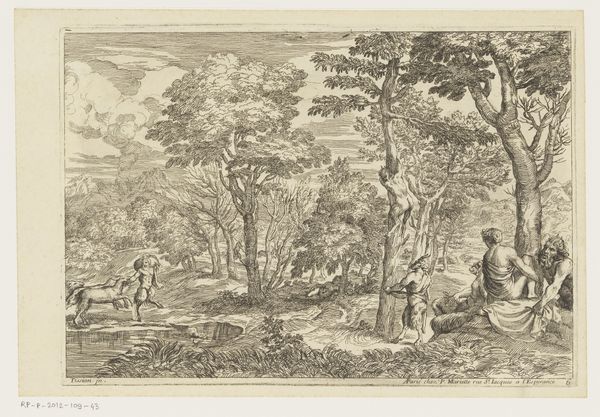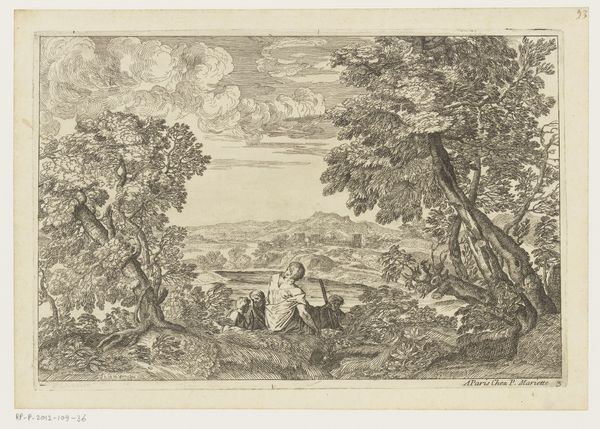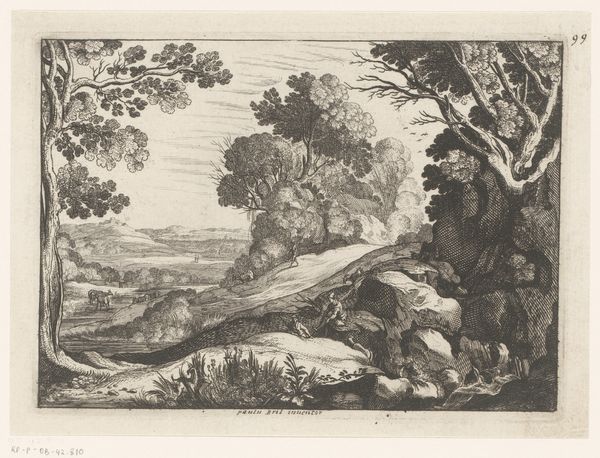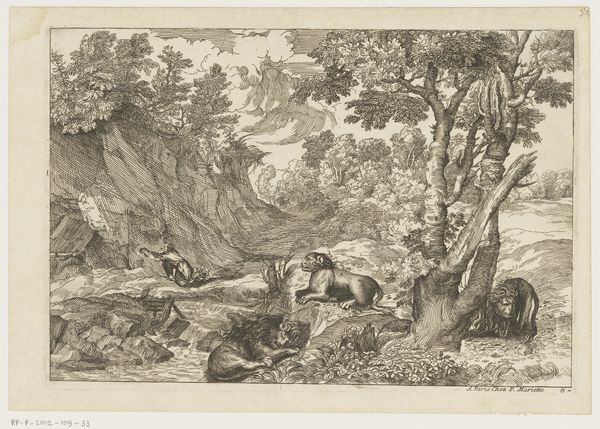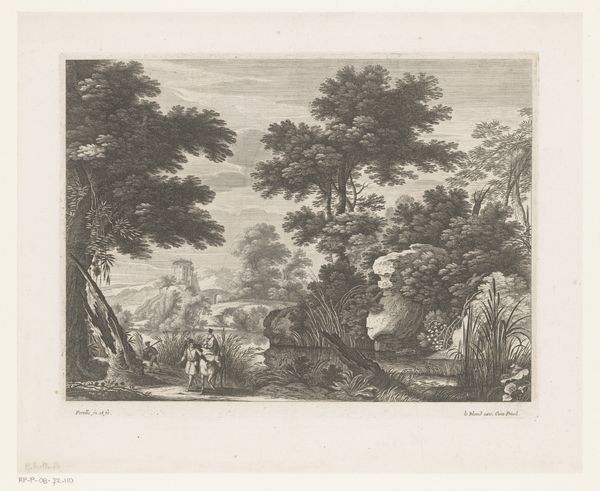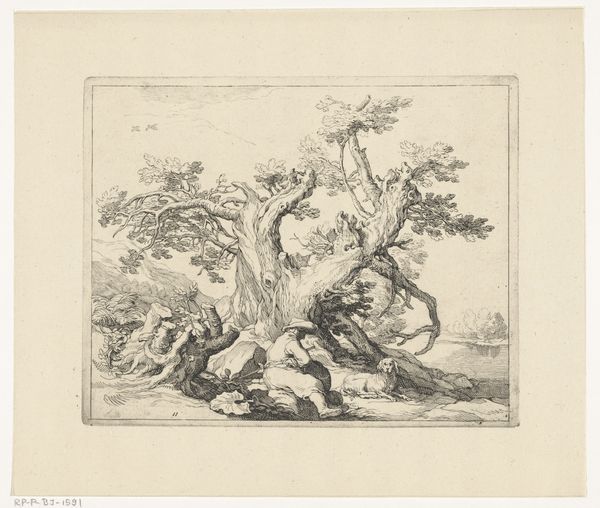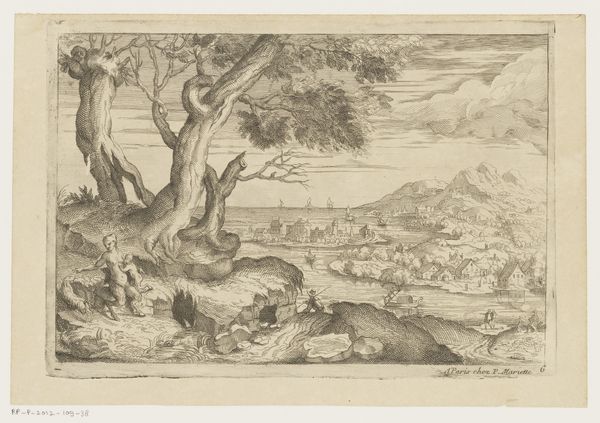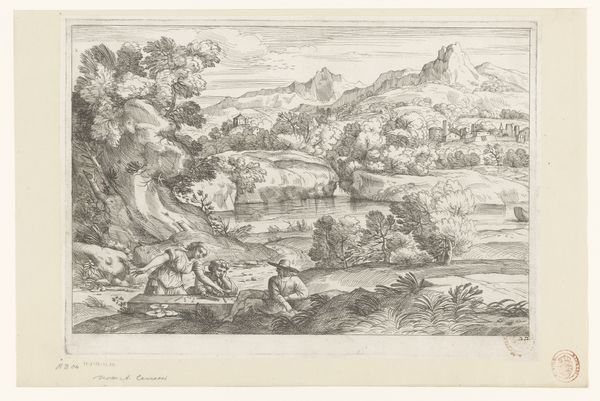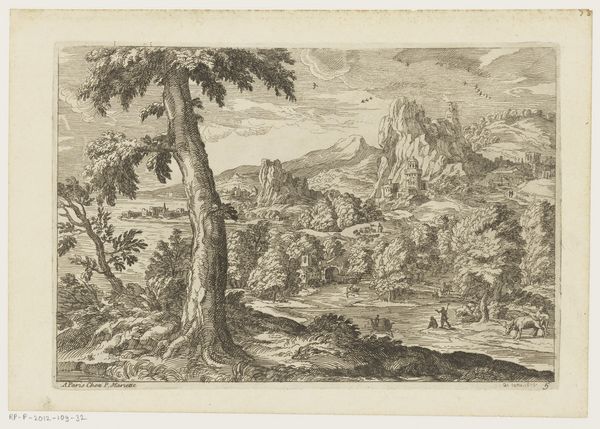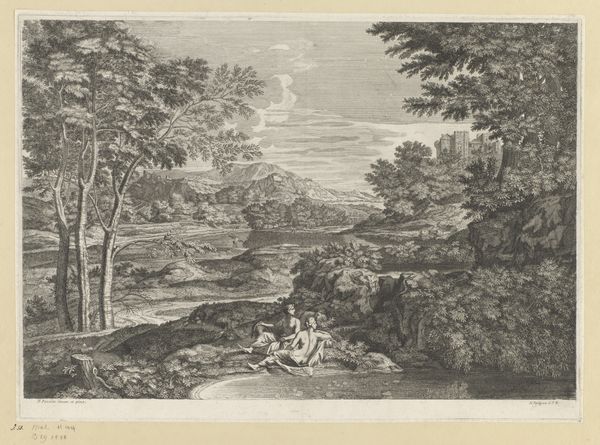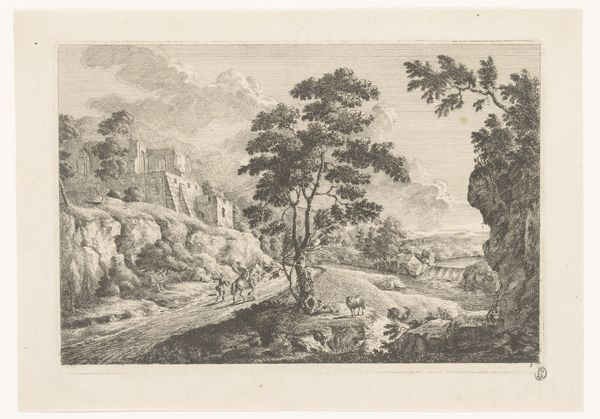
print, etching
#
ink drawing
#
baroque
# print
#
etching
#
landscape
#
figuration
Dimensions: height 198 mm, width 280 mm
Copyright: Rijks Museum: Open Domain
This etching, made by Moise Jean Baptiste Fouard in the late 17th or early 18th century, presents us with a pastoral scene, yet it subtly vibrates with a sense of wandering and performance. Note the central figure, a man with a hurdy-gurdy, or draailier, an instrument often associated with traveling musicians and performers, and a woman by his side. The image speaks to a nomadic existence. In medieval times, the hurdy-gurdy was linked with religious mendicants. Later, it became associated with the lower classes and itinerant entertainers. Consider the mountain backdrop. Mountains often symbolize challenges, spiritual ascents, or barriers. Mountains also recall classical landscapes filled with shepherds, nymphs, and gods. Fouard blends these echoes, creating a rich tableau where music, travel, and symbolic landscapes converge. This imagery speaks to the enduring human need for exploration and the ways we use art and performance to navigate our place in the world.
Comments
No comments
Be the first to comment and join the conversation on the ultimate creative platform.
